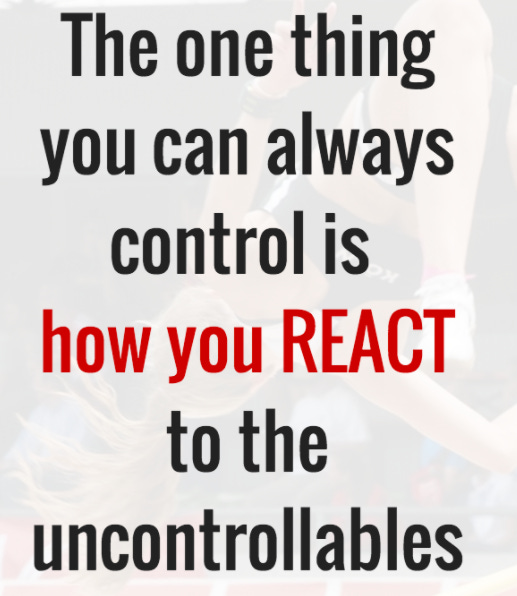The Biggest Trend in Youth Sport for 2022.
Understanding this allows for all those in youth sport to map out a strategy to address it.
Welcome to 2022.
Let the games begin!
Literally, let’s get playing…..PLEASE!!
With the year end reviews all over and the sense of renewal that the new year can bring, I thought it most appropriate to evaluate 2 of the biggest trends in youth sport and solutions on how to address them. This is by no means an exhaustive list, but we would be hard pressed to identify any that are more important.
IF the last 20+ months have taught us anything, it is that things can change in a hurry. Opportunities, events, plans, reservations, deadlines have all been shuffled and/or removed with significant repercussions for all.

The bad news is that this has had and will have a big effect on the physical and mental development of our youth.
The good news is that this has taught all involved in youth sport (and/or anything in life for that matter) that the world continues to function despite plans changing.
Are we better off for what has happened for most of the last 2 years? That might be a stretch.
Are there silver linings from what has happened during this pandemic? I think there could be.
A trend can be defined as follows: a general direction in which something is developing or changing.
If we look at youth sport, the biggest trend we can identify is that of declining participation rates. While the decline started in many sports prior to the pandemic, the last 20+ months have not helped. Most other trends evolve from this big one.
Let’s explore some of the driving foundational trends in youth sport and some of the needs that come from their acknowledgement.
The biggest question then is what to do about the trend of participation decline. Regardless of what level you contribute to your local sports organization (or which sport) from regional, to national and international your participation rates should be key performance indicator on how the organization is doing. From coach/assistant coach, official, volunteer/administrator or board member we all have a roll to play in looking at this metric and understanding its implications.
As an example, The Athletic and Sean Fitz-Gerald brought forth 5 ideas to address hockey’s sagging participation rates. (Hockey Canada cites thousands of less registered in 2021-22 than in 2019-20).
Two things jump off the page from his solutions (which were documented by actual implementation strategy examples from various organizations):
a. 4 of the 5 come from the USA, as opposed to Canada. Canada is the perceived leader in opportunities for young people to play hockey, but USA is taking the lead on initiatives to increase participation.
From the article: Registration has not dropped for USA Hockey at its youngest age groups, with modest increases at both the U6 (1.2 per cent) and U8 (0.5 per cent) levels, compared to two seasons ago.
Further documented, the grassroots have been growing in the U.S. Southeast and Southwest, he said, while moving slower in more traditional areas, such as Michigan.
b. The initiatives documented in the article have multiple things in common:
i. Recognition of the problem and how addressing is critical for the organizations in question to survive
ii. Treating participants as customers and focusing on customer experience. This alone is a breakthrough
iii. Mapping out marketing initiatives to heighten awareness and lower participation barriers like high cost. This has included investing in digital marketing campaigns. Making equipment available through sales amongst association members was one way to lower access cost.
iv. Investing in the grass roots learn to play level to introducing the sport to new populations.
The facts can be a little bit surprising:
Hockey Canada down 15% across the board over 2 years ago, Hockey USA up across the board in the same time frame. USA Hockey taken the lead on initiatives to stem the tide, Hockey Canada still working on it. This is exactly the kind of evidence that should be used across the board in treating youth sport organizations from a business perspective. Does this remind anyone of how 2 businesses may look at a growth problem? 1 with initiative and action and the other not so much ?
Customer experience, marketing initiatives, lowering barriers to entry, differentiation from other options, targeting specific demographics, educating the market are onboarding process are all examples of vernacular used in business applied to these examples with Hockey USA.
These ideas and applications change the way registration is viewed. Changes the way families are perceived (customers), changes the way the opportunity (sport) is presented. These examples also should nudge the way we think at the coaching and leadership in youth sport.
How can we create an experience that keeps the customers happy and returning for more?
How can testimonials become the best referral strategy?
What processes can we set up and implements so this becomes duplicatable across age groups and individual teams within a given organization?
This is the roadmap to reverse the trend of declining participation.
With this effort to impede the decline, so will solutions evolve from the other trends we are seeing.
Specifically, the trend of growing mental health issues in our youth. While this topic can be complex, youth sport can be part of the solution. More accessibility, more participation and we will see these concerns alleviate. Not trying to oversimplify the solution, but sometimes our culture can over complicate things as well.
Getting our youth more opportunities to play, to move and grow improves physical literacy and sets the table for life long positive health.
One of the examples from The Athletic article is from Monument Ice Rinks in Monument, Colorado. Their focus is youth through adults. Adult hockey as well as learn to skate and learn to play are seen as gateways to overall family and community participation.
How can this work in your organization?
Declining participation and repercussions from same define the problem and open the door to solutions. Here are 2:
1. organizations to take a more holistic approach to services offered. More support on physical literacy, nutrition, skill development, mental health…the entire individual. While many may look at this at biting off a lot, the argument could be made at the younger levels to back off the deep dive on only sport skill development and focus more on the whole experience. Many communities have tons of human resources who would love to volunteer their knowledge on the above topics. Many are in the private sector and would be open sharing with families their knowledge. They would do this to grow their reputation in the community. Where the finances would allow, these could be services the organization pays for as part of the “registration membership”. Looking at registration as a membership service is another perspective from the business world that could make a massive impact.
2. The acknowledgement that, like a successful business, the youth sport offering needs to commit to ongoing evolution and progress. This will include assessments, customer surveys, accountability. This will scare many, but without this approach stagnation will continue and so will declining participation.
We can go into more of the trends we see in youth sport, and have addressed most of them in our regular Sunday email newsletter. From monitoring technology and its impact on our youth, to building culture within an organization. Most of these trends come back to the need for youth sport and physical activity to grow participation and then watch the mental health benefits spill over as result. They are connected big time.
The more we share this perspective and continue the discussion, the better and bigger impact we can have.
Let’s not just wish everyone a Happy and Healthy New Year but be a contributor to these goals!!
Additional Resources:
A Canadian initiative supporting growth of hockey participation: https://www.futureofhockeylab.com/






